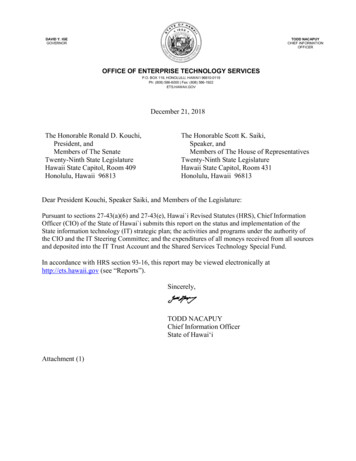
Transcription
DAVID Y. IGEGOVERNORTODD NACAPUYCHIEF INFORMATIONOFFICEROFFICE OF ENTERPRISE TECHNOLOGY SERVICESP.O. BOX 119, HONOLULU, HAWAI‘I 96810-0119Ph: (808) 586-6000 Fax: (808) 586-1922ETS.HAWAII.GOVDecember 21, 2018The Honorable Ronald D. Kouchi,President, andMembers of The SenateTwenty-Ninth State LegislatureHawaii State Capitol, Room 409Honolulu, Hawaii 96813The Honorable Scott K. Saiki,Speaker, andMembers of The House of RepresentativesTwenty-Ninth State LegislatureHawaii State Capitol, Room 431Honolulu, Hawaii 96813Dear President Kouchi, Speaker Saiki, and Members of the Legislature:Pursuant to sections 27-43(a)(6) and 27-43(e), Hawai i Revised Statutes (HRS), Chief InformationOfficer (CIO) of the State of Hawai i submits this report on the status and implementation of theState information technology (IT) strategic plan; the activities and programs under the authority ofthe CIO and the IT Steering Committee; and the expenditures of all moneys received from all sourcesand deposited into the IT Trust Account and the Shared Services Technology Special Fund.In accordance with HRS section 93-16, this report may be viewed electronically athttp://ets.hawaii.gov (see “Reports”).Sincerely,TODD NACAPUYChief Information OfficerState of Hawai‘iAttachment (1)
2018 ANNUAL REPORTOF THECHIEF INFORMATION OFFICER,STATE OF HAWAI ISUBMITTED DECEMBER 21, 2018TO THETHIRTIETH LEGISLATURE
2018 Annual Report of the Chief Information Officer, State of Hawai iDecember 21, 2018Pursuant to sections 27-43(a)(6) and 27-43(e), Hawai i Revised Statutes (HRS), Chief InformationOfficer (CIO) of the State of Hawai i Todd Nacapuy submits this report on the status and implementationof the State information technology (IT) strategic plan; the activities and programs under the authority ofthe CIO and the IT Steering Committee; and the expenditures of all moneys received from all sources anddeposited into the IT Trust Account and the Shared Services Technology Special Fund.Given today’s institutional and budgetary limitations, CIO Todd Nacapuy and his executive team, withinput from other departments and agencies, reassessed in 2015 the existing State IT plans and developednew IT directions and programs consistent with the Ige Administration’s results-driven strategy: to focuson targeted initiatives that stabilize the State’s IT infrastructure and systems and to improve theefficiency of government operations and services by delivering immediate benefits using availableresources.Under the CIO, ETS’ goals are to: identify, prioritize, and advance programs and projects with the greatest potential to increaseefficiency, reduce waste, and improve transparency and accountability in State of Hawai igovernment; and provide efficient, effective, and available information technology (IT) enterprise services and supportin the areas of data center, cybersecurity, computing (mainframe and open systems),telecommunications, application development, and web-based services for the purpose of assistingState government agencies in fulfilling their current and future business mission and objectives; and implement the goal of creating 80,000 new tech jobs earning more than 80,000 a year by 2030through the integration of innovation and technology to meet Hawaii’s sustainability goal of 100%renewable energy by 2045.STATUTORY AUTHORITY AND ORGANIZATIONAL STRUCTUREPursuant to section 27-43(a), Hawai i Revised Statutes, all functions of the programs formerly associatedwith the ex-Office of Information Management and Technology and ex-Information and CommunicationServices Division are consolidated within the new Office of Enterprise Technology Services (ETS) as ledby the CIO, effective July 2, 2016.As amended by section 27-43, Hawai i Revised Statutes, ETS’ statutorily mandated duties include thefollowing:2018 CIO ANNUAL REPORT Page 2 of 22
SummaryStatutory ReferenceDevelop, implement, and manage statewide IT governance and State ITHRS section 27-43strategic plans, as well as develop and implement statewide technologystandards. Section 27-43, Hawai i Revised Statutes, expanded the CIOauthority to work with each executive branch department and agency todevelop and maintain its respective multi-year IT strategic and tacticalplans and roadmaps, and coordinate each executive branch department andagency’s IT budget request, forecast and procurement purchase to ensurecompliance with the department or agency’s strategic plan and roadmapand with ETS’ IT governance processes and enterprise architecturepolicies and standards.ETS also assumed functions of the former ICSD: provide centralizedcomputer information management and processing services; coordinationin the use of all information processing equipment, software, facilities, andservices in the executive branch of the State; consultation and supportservices in the use of information processing and management technologiesto improve the efficiency, effectiveness, and productivity of Stategovernment programs; and establish, coordinate, and manage a program toprovide a means for public access to public information and develop andoperate an information network in conjunction with overall plans forestablishing a communication backbone for State government.Provide for periodic security audits of all executive branch departmentsHRS section 27-43.5and agencies regarding the protection of government information and datacommunication infrastructure.Set policies, procedures and standards for each executive branchHRS section 27-44department’s reasonable efforts to make appropriate and existing electronicdata sets maintained by the department electronically available to thepublic through the State’s open data portal at data.hawaii.gov or successorwebsite.Provide services through centralized web portal and Internet presenceHRS chapter 27G(hawaii.gov) that allow citizens to conduct business electronically with thegovernment, in accordance with statute (i.e., Access Hawai i Committee).Provide guidance to protect personal information that is collected andmaintained by State and county government agencies (i.e., InformationPrivacy and Security Committee).2018 CIO ANNUAL REPORT Page 3 of 22 HRS chapter 487N
The organizational structure was proposed in 2017 and was approved by the Comptroller in September2018. ETS’ program objectives are as follows:Client Services Branch — Provide systems development, enhancement, maintenance, technical support,and consultant services for State departments and agencies to meet their business objectives.Enterprise Architect Branch — Develop, implement, and manage statewide technology policies,guidance, and standards; provide departmental guidance for business and IT decisions that supports theState’s strategic plan and investments and improves the ability to deliver responsive, cost-effectivegovernment functions and services.Enterprise Systems Branch — Provide ongoing operational management support for enterprise systems(e.g., enterprise payroll and human resources systems).Network Branch — Provide statewide telecommunication services (e.g., data network, radio network,and telephone systems) for daily business operations of the State of Hawai i’s executive, legislative, andjudicial branches, including telecommunications interfaces to federal and county governments; provideland mobile radio communications for public safety entities and radio microwave network connectioninterfaces to other county and federal agencies for first responder and emergency communications;provide technical support on voice and telephone systems to State government entities.Production Services Branch — Schedule, execute, and monitor production jobs for State departmentsand agencies, as well as monitor the State networks and maintain the operation of the State data center.Program Management Branch — Provide management, business consulting services, and businessapplications support to agencies to effectively develop and maintain new technology applications andimprove service delivery through effective integration of technology solutions; provide programmanagement development support for enterprise technology programs and projects (e.g., enterprisepayroll).Security Branch — Manage the statewide cybersecurity program to secure and protect electronic assetsand data stored on State computer systems or transported through the State’s networks.Systems Services Branch — Provide systems administrative and operational support for the IBMMainframe (Z) System, Enterprise backup and restore, Enterprise UNIX (P), mainframe (Z) user access,FTI compliance, and disaster recovery.Technology Support Services Branch — Provide support, maintenance, and development of hardware,software, and infrastructure for on-premise and Cloud applications.2018 CIO ANNUAL REPORT Page 4 of 22
TOP ACCOMPLISHMENTS OF 2018Client Services Branch — Actively supported the Hawai i Annual Code Challenge in partnership with theHawai i Technology Development Corporation, and Hawai i Pacific University to engage the local techcommunity in government modernization and expose individuals within Hawai i’s IT workforce to Statecareer opportunities. Completed a six-month paper reduction program which reduced paper use by 20percent, translating to a savings of one million sheets of printed paper. Implemented Software AG’s N2Ochange management software and procedures for the Department of Labor and Industrial Relations,Unemployment Insurance Division’s computer applications.Enterprise Architect Branch — Achieved full participation among executive branch departments in the ITroadmapping process as part of development of the State’s overall IT strategic plans. Supported successfulimplementation of the Department of Taxation’s Tax System Modernization (TSM) program, in accordancewith the naming of the CIO as executive sponsor of TSM in July 2017.Enterprise Systems Branch — Ongoing maintenance and support of the Executive Branch HumanResources Management System (HRMS). Migrated the State mainframe payroll to Hawaii InformationPortal (HIP) Payroll system for over 60,000 state employees. Enrolled thousands of State employees fordirect deposit through online employee self-service. Built and maintained interfaces to all agency HR andPayroll data sources.Network Branch — Added fourteen new connections onto the State’s Institutional NETwork (INET)providing high speed connectivity to sites on the Big Island, Kauai, Lanai, and Oahu. Established additionalredundancy between the State’s data centers to support higher availability, expanded data center networkinfrastructure to support new computer and storage systems, and completed redundant host circuitconfigurations to support redundancy for remote sites back to Oahu. Performed network topology changes toincrease the reliability of the State’s radio systems. Added Hawaii Wireless Interoperability Network(HIWIN) Land Mobile Radio (LMR) coverage/connectivity to Kona Airport, West side Oahu, North shoreOahu, and West side Kauai. Added access to HIWIN LMR through cell phone for administrators.Established new statewide price list through the State Procurement Office for long distance telephone services(inter-island, mainland and international).Production Services Branch — Effectively managed production jobs for State departments and agencies,monitored the State networks, and maintained the operation of the State data center.Program Management Branch — As part of DAGS Accounting Division’s Enterprise Payroll and Time &Attendance Modernization (HawaiiPay) project, accomplished successful payroll Go-Live implementation forGroups 1 (DAGS and DHRD) and 2 (all other remaining jurisdictions, departments, and agencies – exceptUH and DOE) to the new Cloud-enabled services environment.Security Branch — Issued initial statewide cybersecurity policies and standards and hired additionalcybersecurity staff.Systems Services Branch — Continued to provide high availability to the IBM Mainframe (Z System),enterprise UNIX, and enterprise backup and restore environments. Continued to upgrade operating systemand middleware to come into compliance with the IRS Publication 1075. For disaster recovery, themainframe “D” copy services are fully functional, a prerequisite for non-disruptive testing of the mainframe(Z) production environment. Forensic analysis of the chargeback process was conducted with consultantsalongside members of our systems personnel and ETS fiscal with new procedures to make the process moreefficient and streamlined.2018 CIO ANNUAL REPORT Page 5 of 22
Technology Support Services Branch — Continued support for rollout and adoption of Microsoft Office365 for the executive branch departments, hardened the State’s Active Directory infrastructure, researchedand implemented the new web platform for the State, support of Hawaii Payroll project, procurement anddelivery of new ETS-managed local private Cloud service (Hawai i Government Private Cloud)infrastructure and alternate storage solutions, increased adoption of Adobe Sign (electronic signature),researched and tested web security services and Content Delivery Network features, and developed andsupported the secure infrastructure of the Office of Elections. Provided technical support to Hawaii Countyin their volcano eruption relief efforts.EXECUTIVE BUDGET REQUEST FOR FISCAL BIENNIUM 2019 - 2021To facilitate continued progress as well as operate and maintain State IT infrastructure and related services,ETS is requesting the funds described below. (Also described in Executive Budget Request for FiscalBiennium 2019 -2021.While ETS is operating as one organization in accordance with section 27-43(a), Hawai i Revised Statutes,the office maintains two budget IDs previously associated with the former programs (AGS 130 and AGS131). To facilitate cost- transparency, ETS will continue to maintain these budget IDs, re-described in thesections that follow.AGS 130: Enterprise Technology Services – Governance and InnovationProgram objectives include providing governance for executive branch IT projects to provide the essentialState oversight necessary so that intended goals are achieved and positive ROI is realized for the people ofHawai i. The program also seeks to prioritize and advance innovative initiatives with the greatest potentialto increase efficiency, reduce waste, and improve transparency and accountability in State government.Budget Request: An increase of 150,000 in FY20 the Shared Services Technology Special Fund for payroll costs.The fringe benefit rate has increased significantly in the last several years, currently over 60%,which has significantly increased payroll expenses. 150,000 in FY20 for a Mobile Device management software to ensure devices are kept up to date,patched and could be wiped in the event the device is lost or stolen. 1,038,240 in FY20 and 1,263,902 in FY21 for various cybersecurity software subscriptions toaccomplish protecting our network from various cybersecurity threats. 3,000,000 in FY20 and 218,000 in FY21 in CIP funds for cybersecurity upgrades to augmentcurrent infrastructure to more effectively and efficiently combat cybersecurity threats. 1,800,000 in FY20 in CIP funds to replace end of life Uninterruptible Power Supply (UPS)equipment. New equipment and electrical infrastructure is needed to continue normal operationsfor the State of Hawai i.2018 CIO ANNUAL REPORT Page 6 of 22
AGS 131: Enterprise Technology Services – Operations and Infrastructure MaintenanceProgram objectives include support of the management and operation of State agencies by providingeffective, efficient, coordinated, and cost-beneficial computer and telecommunication services such thatState program objectives may be efficiently achieved.Budget Request: 365,000 in FY20 for upgrades to the DLNR GreenNet and connection to HIWIN to enhance,restore and enable radio and interoperable communications within and outside of DLNR's existingnetwork.ACTIVITIES AND PROGRAMSIn fulfillment of these goals, the primary objectives for the biennium are summarized in the followingsections:Client Services Branch — Continue to improve the efficiency of State government by converting hardcopy paper reports to electronic documents, which will reduce storage requirements, facilitate sharing ofinformation, and reduce paper use. Create or participate in pilot projects and proof of concepts to gainexperience in new technologies and determine potential applicability within the State. Support theHawai i Annual Code Challenge program, which results in a number of proofs of concept proceedingbeyond development to implementation and launch.Enterprise Architect Branch — Publish statewide IT roadmaps to inform approval of spending requestsand implement process for such approvals. Also support successful implementation of the Department ofTaxation’s Tax System Modernization (TSM) program, specifically “Rollout 3,” which enhances onlineservices for Corporate Income, Franchise, Public Service Company, and Withholding taxpayers; and“Rollout 4,” which will begin to address individual income filing and other areas. Publish RFP andexecute new contract the Statewide Internet Portal (web applications) provider.Enterprise Systems Branch — Implement successful PeopleSoft Payroll Go-Live for Group 3 (UH andDOE), as part of the Payroll Phase of DAGS Accounting Division’s HawaiiPay project.Network Branch — Improve the State’s telecommunications networks by adding high speed networkconnectivity to locations on all islands, increase network redundancy to provide maximum availability forcustomers, assist departments with increasing visibility of departmental networks, establish a public cloudexchange for supporting public cloud services, and improve network design for availability and reliabilitypurposes. Double HIWIN LMR system capacity, upgrade radio microwave backhaul to Ethernet standardformat which will facilitate increased connectivity and redundant routes, and maintain aging radiofacilities and infrastructure.Production Services Branch — Maintain effective and efficient day-to-day operations of production jobexecution and monitoring of the State network and data center.Program Management Branch — Complete payroll Go-Live deployments for all groups (to include UHand DOE) and launch phase two of the HawaiiPay project, time & attendance. Identify opportunities forstatewide enterprise licensing and shared products and services.Security Branch — Refine statewide cybersecurity policies and standards, increase cybersecurity awareness andeducation, and assess department capabilities to be resilient against cybersecurity attacks.2018 CIO ANNUAL REPORT Page 7 of 22
Systems Services Branch — With D-Copy Services now operational at the disaster recovery site, we cannow commence non-disruptive testing of the production volumes. A new test logical partition is being putup using the latest versions of COBOL, CICS, Software AG ADABAS/Natural, and DB2. This is beingdone to move these upgrade projects faster. Implementation of a PC based interface into the chargebacksystem to allow non-technical personnel to be able to retrieve their own reports and create invoices. Theenterprise backup and restore system to introduce a new storage pool structure called container pools andthe use of Cloud Object Storage to eliminate the need for tape and the ability to vault archive informationto a S3 provider.Department DashboardIn accordance with section 27-43, Hawai i Revised Statutes, requiring departments to develop and maintaintheir respective multi-year IT strategic and tactical plans and roadmaps as part of the State’s overall ITstrategic plans, ETS launched the Hawaii Department Dashboard in January 2017. The Dashboardprovides an overview of 16 executive State departments’ IT projects and timelines, status and financialbreakdowns. The Dashboard tracks more than 450 million in spend and more than 600 projects. TheDashboard can be found on the ETS website’s home page, on the Hawaii Department Dashboard icon.The IT Roadmap plays a significant part of the overall planning, budgeting, and execution process, andcontains information on all significant IT activities for executive branch departments over a period of time.Activities are aligned with business lines, departments’ priorities, ETS initiatives, and ultimately theGovernor’s priorities. Data includes information on projects, on-going processes, budget, schedule, andstatus.RecognitionsETS has been recognized both nationally and globally for its innovation, initiatives and outstanding workin advancing the State of Hawai i. Likewise, CIO Todd Nacapuy has been recognized for his leadershipand the work he’s done to move Hawai i forward.The awards are as follows: The Hawai i Annual Code Challenge (HACC) has been awarded the State IT Innovation of the Yearaward by StateScoop, the leading government IT media company in the nation’s capital. HACC wasselected among 49 finalists from across the country for the top award. The State’s Hawai i Department Dashboard has been recognized with the first ever Chaucer DigitalInnovation Award in the North America category. An initiative by the Office of Enterprise TechnologyServices (ETS), the Hawai i Department Dashboard is a strategic roadmap that uses digitalvisualization to improve the State’s IT governance process and promote organizational change. It alsoaids with communications and planning of IT projects across State executive branch departments. Hawai i is ranked first among fifty states in emerging technologies/innovation, according to the Centerfor Digital Government’s 2018 Digital States Survey. It also ranked second for its exemplary work insupport of collaboration. In addition to those rankings, Hawai i received an overall grade of B in theDigital States Survey, up from B in 2016. CIO Todd Nacapuy was named Business Executive of the Year for the Business Achievement Awardspresented by Pacific Edge Magazine. The award recognizes an executive who has made a great impacton their organization through innovation, integrity and growth. CIO Todd Nacapuy was a finalist in Pacific Business News’s Business Leadership Awards. The award2018 CIO ANNUAL REPORT Page 8 of 22
recognizes those with a track record of business excellence, leadership, and community involvement. CIO Todd Nacapuy was awarded the United Filipino Council of Hawaii’s Progress Award inInformation & Technology. The award is given by the statewide organization for the Hawaii’s Filipinocommunity and recognizes Filipino residents in their field of expertise, as well as for their civicservice.IT STEERING COMMITTEEPursuant to HRS section 27-43, the IT Steering Committee was established to advise and support the CIO by: Assisting the CIO in developing and implementing the State IT strategic plans; Assessing executive branch departments’ progress in meeting the objectives defined in the State ITstrategic plans and identifying best practices for shared or consolidated services; Ensuring technology projects are selected based on their potential impact and risk to the State, aswell as their strategic value; Ensuring that executive branch departments maintain sufficient tools to assess the value andbenefits of technology initiatives; Assisting the CIO in developing State IT standards and policies; and Clarifying the roles, responsibilities, and authority of ETS, specifically as it relates to itsstatewide duties.Committee MembershipConsiderable effort was expended over the past two years to facilitate the filling of vacancies on theITSC. As of the date of this report, all council vacancies have been filled.IT Steering Committee Membership Roster (as of December 18, 2018)NameAffiliationTodd Nacapuy (Chair) Office of Enterprise Technology Services (CIO)Benjamin AnchetaEkahi Health SystemJared I. KuroiwaUpspring -AIO DigitalAryn H.K. NakaokaTri-net SolutionsMichael NishidaFirst Hawaiian BankChristine SakudaTransform Hawai‘i GovernmentKelly TaguchiSpectrumKevin ThorntonHawai‘i State JudiciaryRep. Kyle YamashitaHawai‘i State LegislatureMarcus YanoSystemMetrics CorporationGarret YoshimiUniversity of Hawai‘i2018 CIO ANNUAL REPORT Page 9 of 22 Appointed ByEx Officio MemberSenateSenateSenateHouseHouseSenateChief JusticeHouseHouseGovernor
Assessment of the CIOThe assessment of the CIO was created at his request and the decision to evaluate him was solely madeat his discretion. The CIO believed it was important that his performance be evaluated each year toensure that he was creating value for tax payers and ensuring the maximum ROI for tax dollars beingspent on IT. Future CIO’s may not elect to be evaluated by the ITSC.The committee’s intent, when approving the metrics in May 24, 2018, was to set “stretch” metrics thatare challenging. The ITSC evaluated the CIO based on several metrics, organized under the sevenpriority areas: IT Governance, IT Workforce Development, Cybersecurity, Enterprise Programs andProjects, Services-Oriented Infrastructure, Open Data, and Cost-Transparency. It should be noted thatthe success of meeting certain metrics may not entirely be under the control of the CIO and may alsodepend on the availability of adequate funds and resources, as well as other factors.On December 13 and 20, 2018, the committee met and evaluated the State CIO based on the thirtyone (31) metrics below, organized under seven priority areas stated above. Supporting data andreference materials for the metrics were provided to the committee, as well as in-person explanationsand online demonstration of data.The committee used the following scoring framework for scoring:A Completed 100% on time, on budgetB Completed but not on time, on budget (up to 10% variance)C Completed but not on time, on budget (11-20% variance)D Completed but not on time, on budget (greater than 20% variance)F Not at allI Not scored (with justification)The committee arrived at final scores by consensus, and average grades for each priority area werebased on value judgments of each of the individual metric grades under a particular priority area. TheCIO wanted to note that the ITSC graded items no. 1 and 2 under the IT Governance metric an F dueto the lack of participation from DOE, although exceptional outreach and efforts were made tocommunicate with the department to comply with Administrative Directive No. 15-02 and HRSsection 27-432(a).The IT Steering Committee’s assessment of the CIO follows:2018 CIO ANNUAL REPORT Page 10 of 22
IT GOVERNANCENo.1232018 Metric DescriptionExpand IT governance processes toinclude the Department of Education(DOE), pursuant to AdministrativeDirective (AD) No. 15-02, “ProgramGovernance Requirements for Act 119and Enterprise Information TechnologyProjects”Expand IT annual budget request processto include participation by theDepartment of Education, in accordancewith HRS section 27-43(a)(5), requiringdepartments to maintain their respectivemulti-year IT strategic and tactical plansand roadmaps as part of the State’soverall IT strategic plansReduce costs of IT projects reviewedunder IT governance processes (AD No.15-02)2018 CIO ANNUAL REPORTMeasurementPercentage ofdepartmentsparticipatingPercentage 1/18Percentage ofreduction relativeto overall IT costs:10 percent12/1/18 Page 11 of 22 GradeFComments16 out of 17 Departments actively cb4b33a824-43cb-9e06-8733e28296bdF16 out of 17 Departments actively cb4b33a824-43cb-9e06-8733e28296bdATotal cost reduction, avoidance, efficiency gainsapprox. 17% of all approved IT spend requests – a824-43cb-9e06-8733e28296bd
No.452018 Metric DescriptionDeploy 10 Enterprise Architecture (EA)policies and standards on citizen-facingwebsite; continuous deployment andmaintenance of statewide policies andstandards.Establish web accessibility standard andlaunch statewide training resourcesMeasurementYes or no andoverall quality ofresourceYes or noDeadline12/1/1812/1/18Average GradeGradeCommentsDCurrently, 6 policy/guidelines are postedSee: http://ets.hawaii.gov/policies/BCIn FY19 Q1, ETS procured and deployedSiteImprove web accessibility checking, siteoptimization web software for use by allExecutive Branch Departments, includingproviding overview/usage training sessions (inperson and via web). Formulated draft updatedweb accessibility standards – internal ETS reviewcomplete. Next step to confer with DCAB.IT WORKFORCE DEVELOPMENTNo.62018 Metric DescriptionMinimize level of vacancies within ETSMeasurementVacancies: lessthan 10 percentmonthly averagerateDeadline12/1/18GradeCommentsA7% vacancy rate; expected to decrease further byend of year – 3 individuals selected for hire.Facilitate programs designed to establish, expand and/or promote career path opportunities within the State for IT workers:2018 CIO ANNUAL REPORT Page 12 of 22
No.2018 Metric DescriptionUse of LinkedIn as a recruitment/branding tool throughout all departments(not only for IT positions)Measurement20% ofdepartments usetool8ETS Employee participation in the CivilService IT Broadbanding Project9Continue and expand Hawaii Annual CodeChallenge program10*NEW* Technical training – Provideprofessional development and personaldevelopment to ETS based on needsassessment conductedETS employeesparticipating in12/1/18program: 10percent ofapplicable civilservice ITemployees3rd eventcompared to12/1/18previous; goal:greater than 250participantsSuggested:Increase the12/1/18number of stafftaking training by20% from the prioryear. Or: Use alltraining budget for2018.7Average Grade2018 CIO ANNUAL REPORTDeadline12/1/18 Page 13 of 22 GradeCommen
Resources Management System (HRMS). Migrated th e State mainframe payroll to Hawaii Information Portal (HIP) Payroll system for over 60,000 state employees. Enrolled thousands of State employees for direct deposit through online employee self-service. Built and maintained interfaces to all agency HR and Payroll data sources. Network Branch

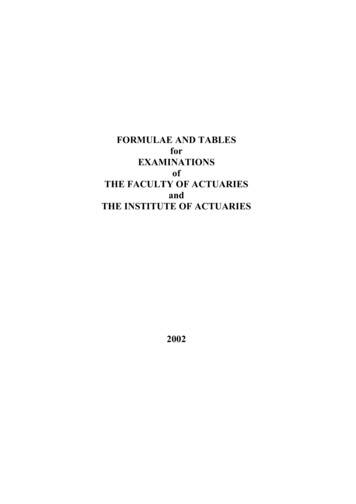
![VWHPV 0RGHUQL]DWLRQ 3URMHFW 56 VHFWLRQ KWWS](/img/7/hi-dhs-ivv-monthly-status-rpt-february-2019-final.jpg)

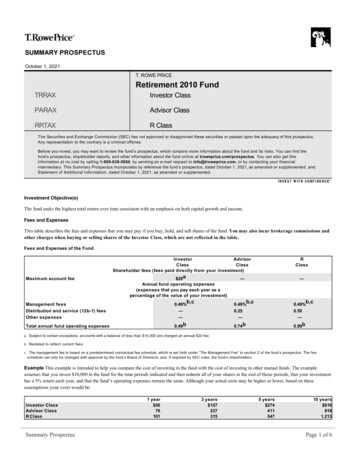

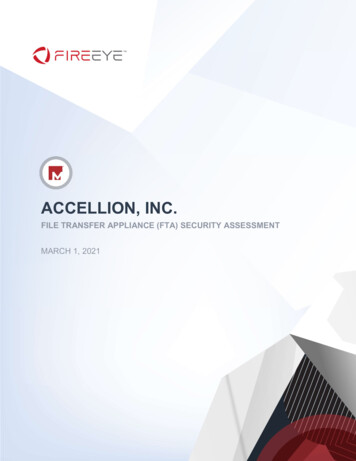
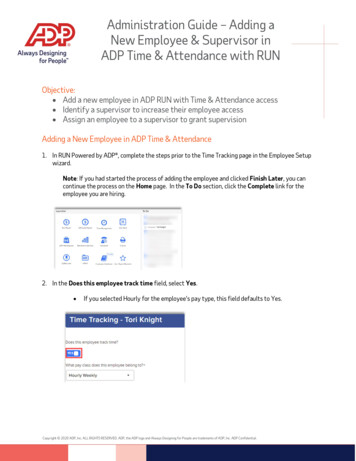


![Podstawy prawne Termo2019NA STRONÄ .ppt [tryb zgodnoÅ ci]](/img/17/1-podstawy-prawne-ochrony-gatunkowej-zwierzat-news-image.jpg)